
All categories
Featured selections
Trade Assurance
Buyer Central
Help Center
Get the app
Become a supplier

(1016 products available)
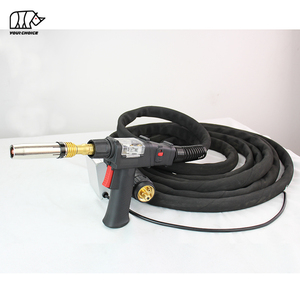
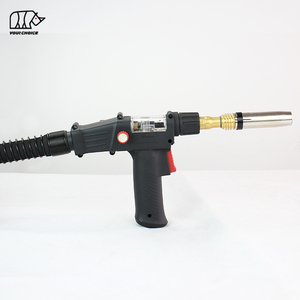


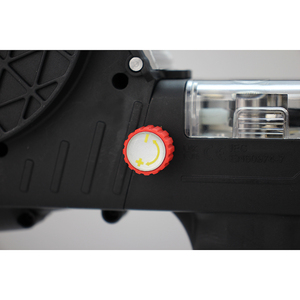
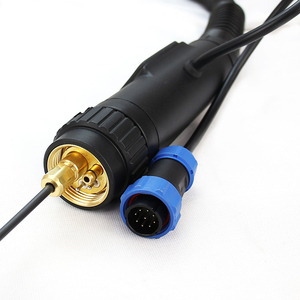
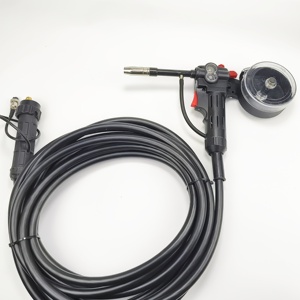


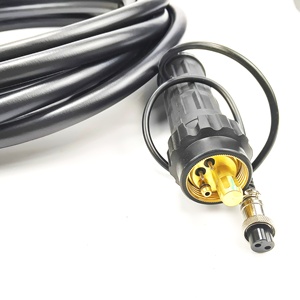

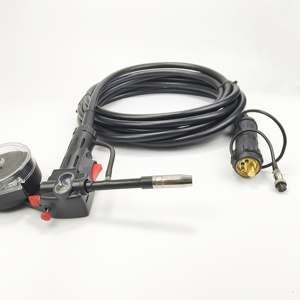



















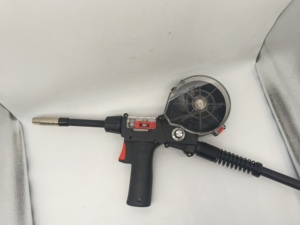


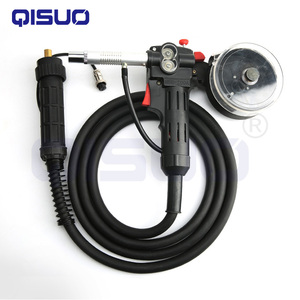
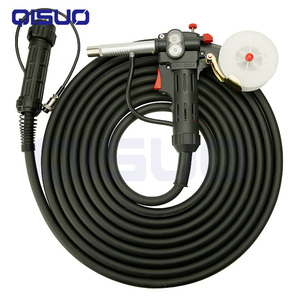



Therefore, it is appropriate to understand the nature of the various Push Pull Gun Mig types to help widen the understanding moving towards the right operational stage again. These tool types are categorized based on characteristics of function, which makes them suitable even in different welding scenarios.
As the name suggests, there are manual push-pull Migs whereby the welding personnel have to adjust the set parameters manually. Such operations usually afford welding professionals total manipulation of the process; nevertheless, it requires much more physical input. This segmentation is favorable whenever one has to perform precision work in thin metal or specific alloy applications.
Semi-automatic pull-push Migs reduce manually evolving factors as they install systems that automate some settings. People should still hold the welding torch, but some parameter adjustments could be made automatic. Such devices are efficient since they increase productivity levels and decrease fatigue while still providing an operator with reasonable control.
Automatic push-pull Migs do all compared with former categories by using automated systems that control welding operations without needing an operator to adjust welding tools' settings. This machine is suitable for production lines that have workers dealing with the same weld repeatedly, ensuring the best results are always on point.
Machines referred to as portable push-pull MIGs are constructed with portability in mind. These smaller units allow for mobility, which can be very handy and productive when performing fieldwork or in any environment where one cannot have set up fixed equipment. Despite their size, many of these units carry a significant amount of power and functions similar to those of larger established machines.
The industrial push-pull Migs are made for large-scale commercial use, focusing on great durability and performance. The aforementioned machines are created to bear intensive order loads for the day and, in particular, are designed to suit big projects. These models frequently include advanced features to improve the quality and productivity of welding.
People should consider the importance of maintaining and knowing the specifications of tools for push-pull MIG guns. A proper understanding increases their lifespan and guarantees the proper functioning of the equipment. Factors such as wire feed speed, temperature, and boost are paramount in determining the exercise, and they also call for careful maintenance.
The key specifications that push the pull MIG guns generally consist of:
Wire Feed Speed (WFS)
This is the speed chosen at which the welding wire is fed through the gun. Wire feed speed has to be compatible with the welding materials and the process involved. If this is so, it will affect the quality of the weld and possibly cause a problem with the equipment.
Gun Temperature
Safety is very important for any working environment. It is crucial when dealing with welding. Gun temperature is determined by the use of wire and welding parameters. If this is not controlled, damage to the equipment can occur or even cause safety problems.
Compression Ratio
This is the ratio of the pulling end of the apparatus to the pusher end. The proper proportion may influence the consistency of wire delivery. When the discrepancy in such a ratio arises, fluctuations in welding will arise due to inadequate or excessive feed.
Nozzle and Liner Specifications
Indeed, nozzles and liners are very important components in welding operations. Their role in this discussion is to secure that metal joints are well protected from foreign matter. However, their extent of compatibility with various wires and welding types is essential.
Regular Cleaning
Cleaning the push-pull mechanism, nozzle, and liner requires a lot of elbow grease to ensure optimum performance. They must be brushed off after every job, as spatter and contaminants can harm if left there. Lubrication, too, is critical for the gears and pulleys to keep everything in good working order.
Wire Inspection
Before any job, it's wise to check that the welding wire is in good condition: no rust, dirt, or damage. Any imperfections in the wire will be transferred to the weld, so the pull gun should deliver smooth, clean material.
Cooling System Check
Many pull guns have a cooling system to prevent overheating during long jobs. Drivers must ensure all components are clear and working properly - fans and hoses shouldn't be blocked by debris. A cooled machine means better performance with no risk of damage from excessive heat.
Wear and Tear Monitoring
Over time, parts like rollers may experience some level of damage. Maintenance should include frequent inspection and replacement of anya worn parts that could hinder the operation.
Push pull gun MIGs are relative since they have diverse uses across several sectors and are perceived to be effective given the nature of their required bend. Below are the investments and situations where this welding technology plays a crucial role in creating robust and reliable structures.
In the automotive sector, demand varies with the species, and it is vital for the operations to be maintained in a timely manner. Push-pull MIG guns are used here to perform welding on various metal thicknesses and disparate alloy compositions, which are particularly useful. This capability is broadly useful for welding car frames and engine components, which require solid, lightweight constructions without the joints having visible distortions.
The aerospace industry needs strong yet lightweight structures. For this reason, push-pull MIG guns are in demand for welding such materials as aluminum and titanium. The high accuracy of welding in this case is important, as any defects may lead to aeroplane parts breaking and, more importantly, safety issues.
Welding and fabrication activities in the construction industry are massive. Push-pull MIG guns are used to join structural steel or aluminum components. Given their efficiency, the guns make an ideal tool for such fieldwork, as construction personnel frequently move to different sites.
The shipbuilding business requires strong welds that can withstand a journey at sea. The maritime sector widely employs these guns because they are useful for welding different metal sheet thicknesses: thus, the resulting joints can withstand corrosion and the weight of the water.
HVAC systems utilize ductwork and other components made of sheet metal. Push-pull MIG guns are helpful here for working with thinner metal sheets: their welds keep ducts sealed and efficient airflow.
Metal fabrication shops would employ push-pull MIG guns for various welding jobs. These versatile guns are ideal for shop operations and can quickly switch between different projects and materials.
Therefore, it greatly helps to claim that one cannot just pick any push-pull gun for MIG, meaning that several variables have to be brought into consideration to achieve the desired performance, especially. The ideal gun should meet the operational demands of the business and be competitively priced and productive. Here are several factors to consider when choosing:
Different welding materials have to be compatible with various push-pull guns. Such welding guns are considered especially useful when working with nonferrous alloys such as aluminum or scapegoat, as their wire feed mechanisms provide the needed pulling power to prevent binding or bird nesting in these softer metals.
If a business needs to weld materials of varying thickness, it must select a gun with wattage provisions that can at least accommodate such variations. The welding of thin metals requires low power, while the joints of thicker materials will need high-energy welding.
The design of the gun has a great impact on how comfortable the operator feels. They need to look at the weight, grip style, and how a gun is balanced, especially for tasks that would take longer; less fatigue for the operator means improved productivity.
The cable length should allow the welders to move freely within the designated area/space without being a safety hazard. A longer cable may be preferred in large areas, whereas a shorter one may be ideal for smaller ones, which reduces the entangling risk.
The cost is crucial, although it should not just be by how much the gun costs purely. One has to think about the long-term usability of the gun for efficiency since, as was mentioned before, the cheaper options give in early, costing more in the long run.
A1: Push pull MIG is more effective on nonferrous metals and provides a steadier wire feeding mechanism, hence reducing chances of bending and creating irregularities. It is cleaner and requires less post-weld work.
A2: One pull-push MIG guns have been designed to feed wires consistently; they can weld metals of conflicting thicknesses, from thin sheets to heavy bulk, especially with adjustable settings.
A3: Push-pull guns are relatively simple to switch between different metals; one must change the wire and adjust settings according to the metal type for the welding to be effective.
A4: Many push-pull MIGs for home use can work with gasless flux-core wire, though traditional MIG welding usually requires shielding gas to prevent weld defects.
A5: Routine maintenance includes cleaning the gun after each use, lubricating necessary parts, and examining liners and nozzles to ensure optimal performance during the next round of welding tasks.